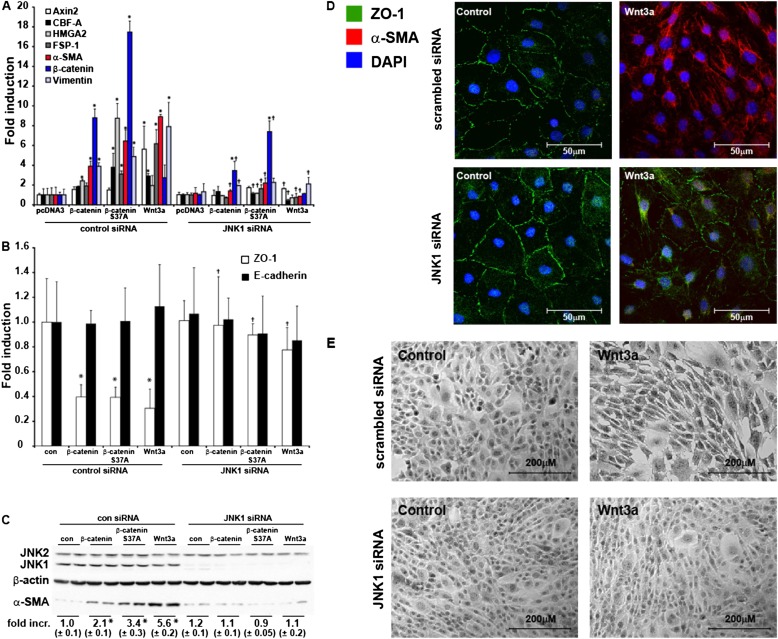Figure 4.
Activation of transition of airway epithelial cells (EMT) regulatory genes and requirement for JNK1 in the activation of EMT transcriptome genes in C10 lung epithelial cells after the overexpression of β-catenin or stimulation with Wnt3a. C10 cells were transfected with scrambled or JNK1-specific siRNA, before the overexpression of WT or S37A β-catenin or stimulation with Wnt3a. Cells were harvested for analyses of EMT transcriptome genes (A) or epithelial genes (B) via real-time PCR analysis. Data were normalized to the housekeeping gene cyclophilin, and all results are expressed as fold change compared with scrambled siRNA transfected control cells. *P < 0.05 (ANOVA), compared with scrambled siRNA transfected control cells (con). †P < 0.05 (ANOVA), compared with respective control siRNA groups. (C) Cells were harvested, and total JNK1/2 (conformation of siRNA-mediated ablation), β-actin, and α-SMA content was assessed by Western blot analysis. Replicate lanes reflect independent samples. Band intensity was determined and expressed as fold increase of α-SMA over β-actin. *P < 0.05 (ANOVA), compared with control samples. (D) Evaluation of ZO-1 (green) and α-SMA (red) immunofluorescence in C10 cells transfected with scrambled or JNK1 siRNA after the stimulation of 10 ng/ml Wnt3a for 48 hours. Nuclei were stained using DAPI (blue). Cells were analyzed by confocal microscopy. (E) Assessment of morphological changes induced by Wnt3a in control siRNA–transfected cells or after the siRNA-mediated ablation of JNK1. Seventy-two hours after the stimulation of cells with Wnt3a, cells were fixed and stained with hematoxylin. Photographs were taken using an inverted microscope connected to a digital camera.

